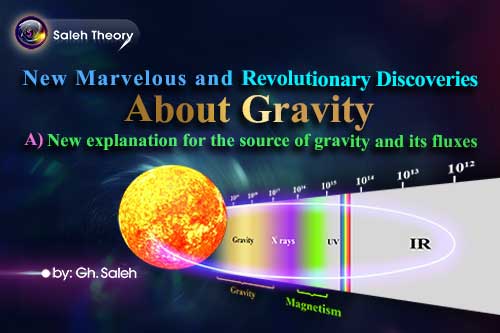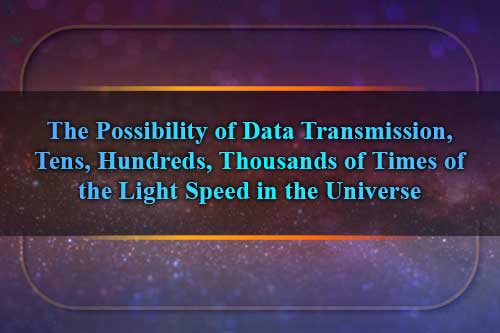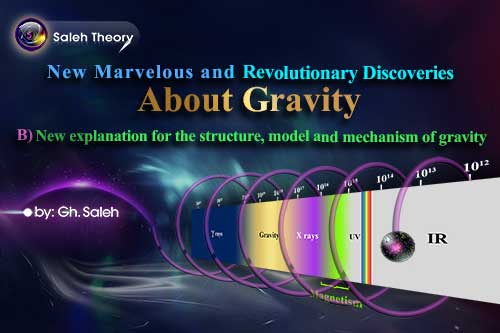
New Marvelous and Revolutionary Discoveries About Gravity (B)
A) New explanation for the source of gravity and its fluxes
B) New explanation for the structure, model and mechanism of gravity
C) New explanation for how fluxes are generated at the gravitational source
B) New explanation for the structure, model and mechanism of gravity
Visible light, emitted from our own star (the Sun), can be divided into seven distinct groups, commonly known as the seven colors of the spectrum that begins with red and ends with violet.
While each color group possesses its own unique wavelength and frequency, all of these and, in general, all electromagnetic spectra fundamentally consist of photons.
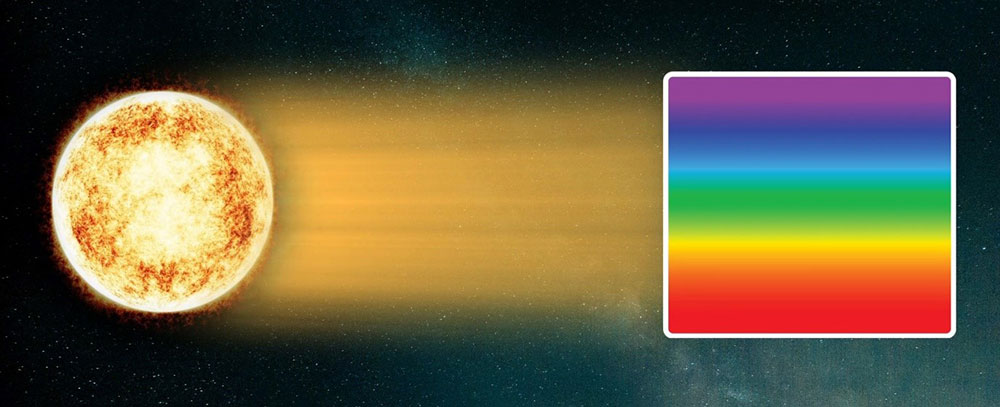
If we consider the redshift effect on the wavelength of red light, we observe a decrease in frequency, resulting in a fundamental change in its color. This redshift, occurring due to alterations in the velocity, causes the red light to shift towards the infrared region. Although the initial red light cannot be directly observed, its underlying nature remains that of a photon. Likewise, violet light is subject to the same principle. The redshift, blueshift, high shift, and low shift phenomena can induce shifts in the frequency of violet light, leading it towards either lower or higher frequencies. Despite these frequency changes, the fundamental nature of violet light, characterized by its photon composition, remains intact.
In fact, the basis of all electromagnetic waves is a photon that has a specific wavelength and frequency.
Therefore, we can conclude that the basis of all electromagnetic spectrum is the photon, each having a distinct wavelength and frequency.
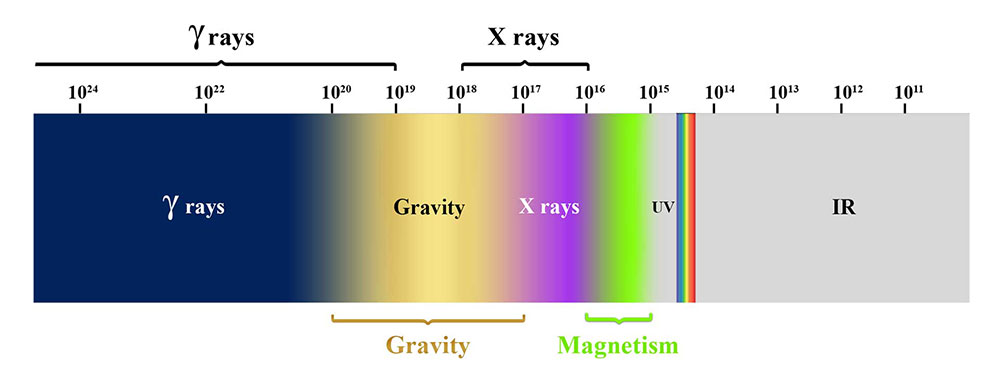
If we consider magnetic fields (which our Sun possesses and the Earth itself can weakly generate), we will observe that they are, in fact, comprised of chained photons or the same magnetic flux that travels from the North pole to the South pole and then return from the South pole to the North pole.

Based on the calculations, the magnetic frequency is approximately 1015 Hz[1], the model and structure of gravitational fluxes are similar to those of a magnetic field. Considering that the gravitational frequency is significantly higher (approximately 1000 times).
In fact, electromagnetic and gravitational waves share similarities in their generation, structure, and effect, with the main difference lying in their vastly higher frequencies for gravity waves. In other words, electromagnetic waves can be considered weak and short-range, while gravitational fluxes are strong and long-range.



